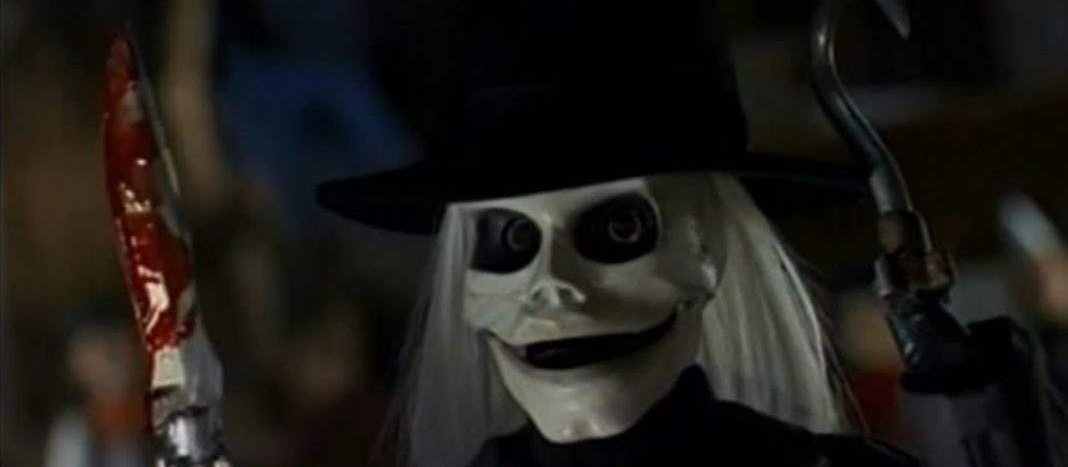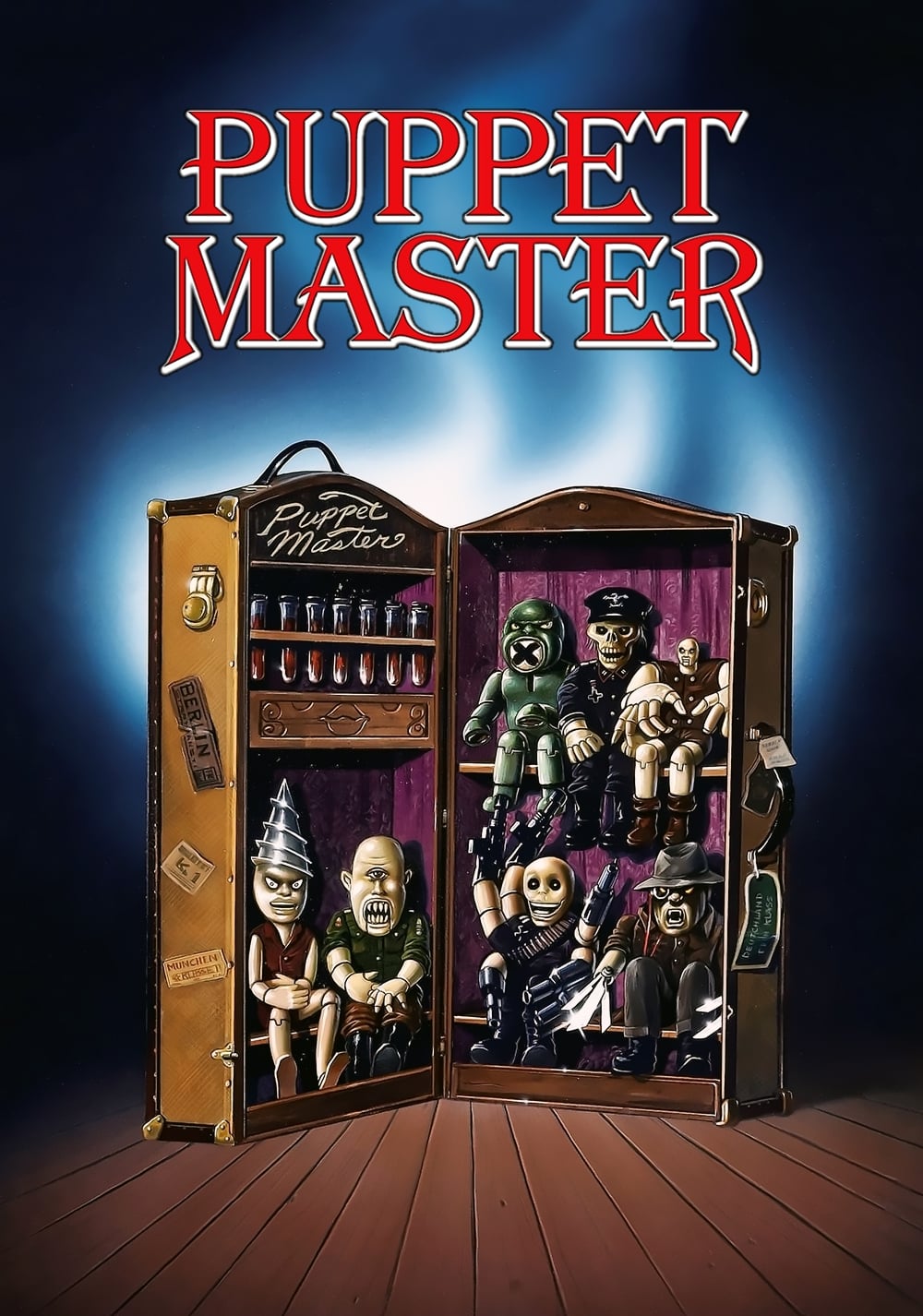

“Metaphysically speaking, I killed myself.”
There’s no “are they or aren’t they?” subterfuge in Puppet Master. The killer toys are definitely sentient, self-animated demons right from the start. Instead, the movie’s whole schtick is tied up in how wickedly the mini maniacs can inflict pain and suffering upon their victims. Note that one of these murderous little dudes has knives for eyes, another one has a conical step drill instead of a scalp, and a third vomits leeches on command. Respectively, they bear the very practical names of Blade, Tunneler, and Leech Woman. Perhaps the least threatening are Jester, a watchman, and Pinhead, who sports a tiny porcelain noggin and man-sized hands. (A most charming discovery I made while doing some light background research on Puppet Master and its little cottage industry of sequels and spinoffs is that there is a Wikipedia page that includes heights and weights of some of the puppets. You gotta love dedicated fandoms.)
In 1939, after frantically bringing a new one to life, puppet master Andre Toulon (William Hickey) stuffs his collection of little anthropomorphic terrors into a hidden compartment in his hotel room, then offs himself as Nazi spies descend on his location. In the present, a group of psychics and mystics (Paul Le Mat, Irene Miracle, Matt Roe, Kathryn O’Reilly) have congregated at the very same spot, beckoned by an old associate named Neil (Jimmie Skaggs) whom none of them seem to care for—apparently he discovered the secret to immortality and then promptly shunned his former colleagues. Or something like that. It’s a sufficiently janky premise, marked by terribly bland execution in the context of schlock cinema, put together with only a bit of verve and woodenly acted. It’s perhaps partially redeemed by a few delicious cornball lines (“I’m not a cynic. I prefer to think of myself as a nasty bitch.” “Fuck you, you Ivy League tight ass.”) and a fun cameo from Barbara Crampton. (What film isn’t improved by a cameo from Barbara Crampton?) Some cite the extensive use of the first person POV “puppet cam” as a highlight, but I found that its novelty wore off pretty quick.
Things get mildly interesting when they invited guests are greeted not by Neil, but by his wife (Robin Frates)—heretofore unknown to them—who reveals that he killed himself and left instructions for her to follow. They get exciting when Toulon’s minions are released in the middle of the night and start massacring the assembly of occult practitioners. Though never approaching the semi-legitimate frights of Child’s Play, these sequences are creatively shot and display an evident passion for that particular style of animation. Nevermind that the story doesn’t make sense.
Directed by David Schmoeller—who had dabbled in a similar scenario with Tourist Trap a decade prior—the direct-to-video Puppet Master miraculously made ten times its budget and kicked off a franchise that’s served as Full Moon Features’ tentpole offering for the past three and a half decades.